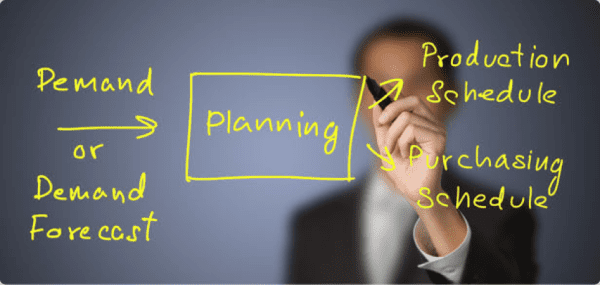Demand planning doesn’t just occur; it requires managed planned and well defined work. To move forward, businesses need to admit the mistakes of the earlier, put in force steady development programs to pressure discipline, and cautiously re-put into effect demand planning technologies.
Within most firms, the phrases Demand Planning causes a response. It is characterised by emotional extremes like anger, despair, disillusionment, and even hopelessness.

Seldom can we discover a whole team excited or optimistic about their chances to enhance demand planning processes. For most teams, demand planning is a mystery, a real love-hate relationship. They need to support the Demand Planning method, however remain sceptical that they are able to ever accomplish that. Even as organizations are probably the most convinced with warehouse and transportation management, they are the least satisfied with demand planning.
In this article, we share insights on the present state of Demand Planning and provide actionable advice that can put in force to make real enhancements.
Note that as organizations mature, using the forecast becomes more comprehensive and is woven right into a number of strategies culminating in a more holistic end-to-end procedure termed demand administration.
Take Demand Planning Survey– Organizations need to review the outcome and discuss their own talent approaches. Most firms fully grasp that it’s elaborate, but they do not see it as a complex procedure. In a problematic approach. There are finite alternates between areas. In the provide chain, these alternate-offs include development, costs, cycles, and complexity.

Understand Demand Volatility- The proliferation of products and the changing needs of purchasers make it more important than ever to sense market demand and rapidly translate the requisites into the provide chain response. Demand volatility is growing, demand knowledge is becoming trickier, and the typical responses are much less robust. Developing an adaptable method that can sense and respond and better manipulate volatility requires a thorough departure from usual design tactics. The business need to understand the external factors governing the demand and also embrace the ideas of demand planning.
A demand planning is hierarchical round merchandise, time, geographies, channels, and attributes. It’s an elaborate set of position-cantered, time-phased information. Within this context, a one-quantity idea process is naive.
A powerful demand planning has many numbers which can be tied collectively in a robust information model for role-established planning. A one-number plan is just too constraining for the organization. So alternatively of one quantity, the focal point needs to be a original plan with advertising, revenue, economic, and supply chain views and agreement on market assumptions.
Buy the right Demand Planning approach- To make certain that you decide on the right science for your operation, it is relevant to map the demand streams and the demand drivers. Elements like causality, seasonality, tops-down and bottoms-up forecasting, and forecast-price add evaluation is most important to the decision of the technology.
Carefully put into effect –So how can we move forward and shut the hole? It starts with the implementation. Firms which are probably the most positive well-known planning tune the optimization engines via a sequence of conference room pilots to force the perfect forecast accuracy.
 Gearfuse Technology, Science, Culture & More
Gearfuse Technology, Science, Culture & More